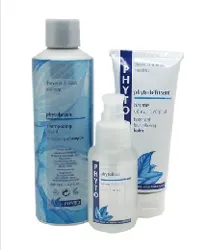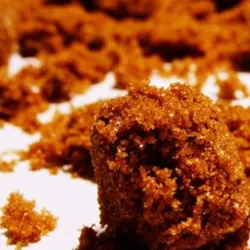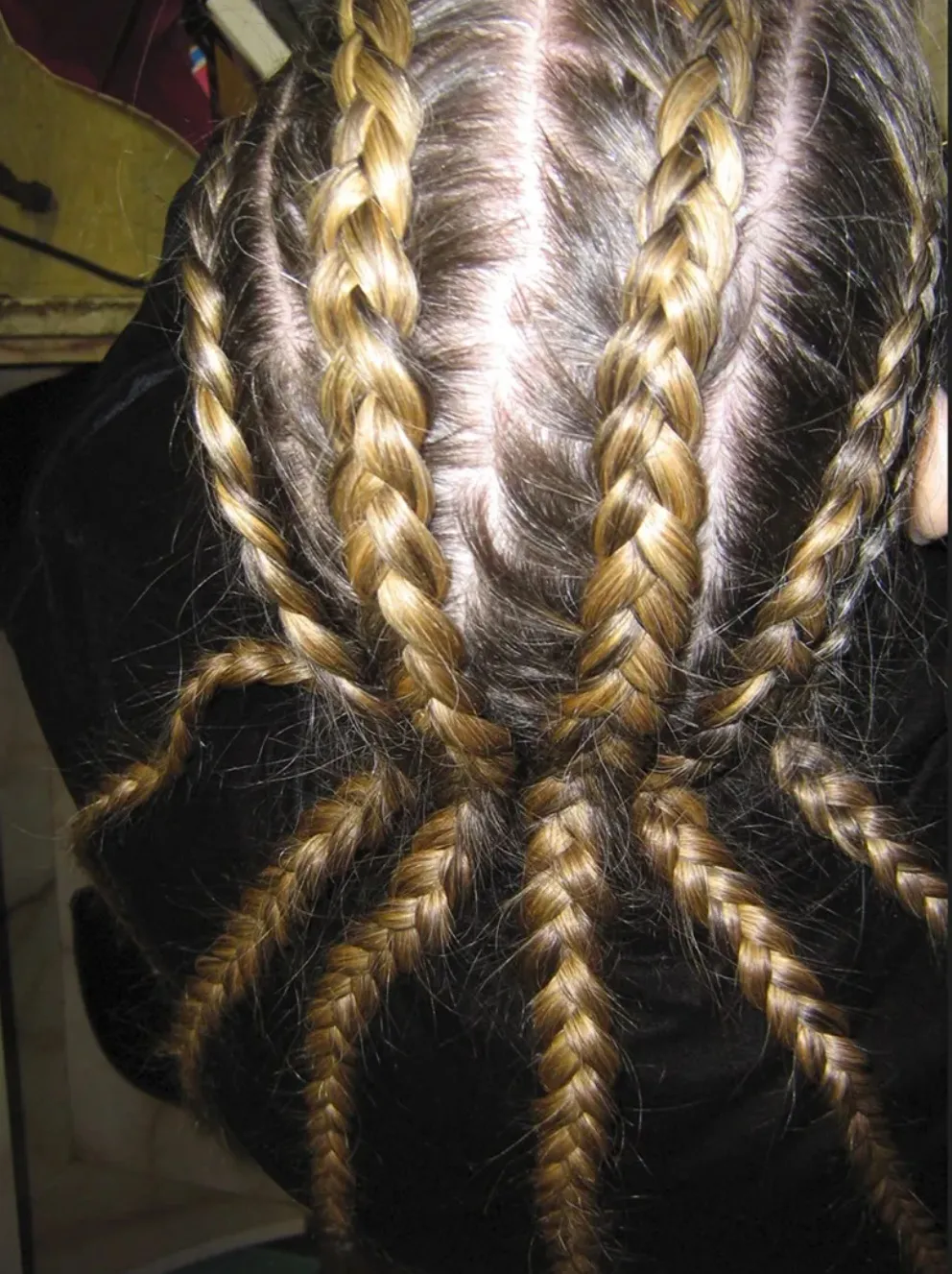
Why Hair Is Weakest When Wet + Tips To Prevent Damage
 According to Dr. John Gray, a beauty scientist with P&G, "Hair is surprisingly strong: a single hair can support a load of about 100 grams without breaking. You could even spin rope out of hair!"
According to Dr. John Gray, a beauty scientist with P&G, "Hair is surprisingly strong: a single hair can support a load of about 100 grams without breaking. You could even spin rope out of hair!"
(Image - Clairol - All Rights Reserved).
Natural Hydrogen Bonds In Hair
Except, and this is a big exception, when hair is wet. When hair is wet or damp it's at its very weakest point. Why? When hair gets wet the water breaks down the natural hydrogen bonds in the hair. Yes, they reform again when the hair dries but while wet, they are most fragile.
What are hydrogen bonds in the hair? According to Dr. Gray "within each hair the keratin chains are also linked by bonds of a different kind, called hydrogen bonds."
Reshaping Hair Into Different Patterns
This in essence explains how hair is able to be reshaped into different patterns when rolled (or set) on curlers or other related styling tools while wet or damp.
The hair's hydrogen bonds are broken apart when the hair is wet and then reforms when it is dried. Whey the bonds break the shape of the hair changes. Therefore, when wet strands of hair are wound around rollers or any type, a new shape forms.
Reason Hair Loses Its Shape When It Gets Wet
The reason curled hair loses its shape when it gets wet is because again the bonds are broken by the water and the texture is lost.
While it's an advantage for wet hair to be weak and capable of being reshaped with curlers or other tools, on the flip side, wet hair is much easier to damage.
How? Wet or damp hair can be easily ripped or town when towel blotting, detangling, combing or brushing.
General Tips To Protect Wet Hair From Potential Damage
Listed below are some general tips to protect wet hair from potential damage:
1. Depending on your hair type, texture and condition, apply a rinse out conditioner during the cleanse process to give hair added strength. Finish with a cool/cold water rinse to help close the cuticles. Although this step is controversial with some hairdressers being in disagreement over the benefit, I personally find it helps.
2. If you wish to squeeze your hair to remove excess moisture be sure to use fingers which are smooth. Fingers with rough edges or nails could potentially rip delicate wet strands. When squeezing excess water do it as gently as possible. Also, squeeze from the ends rather than from the root area.
3. Towel blot means blotting, not rubbing. Use a towel that is smooth and plush. Avoid towels that might be rough or have sharp edges. Gently blot your hair with the towel to remove moisture. Do not use the towel to ruffle damp strands.
4. Only wrap damp strands in a towel if you are careful not to pull or stretch the delicate strands. Some hair consumers will wrap a towel tightly around their wet tresses which puts them under undue stress and strain.
5. Depending on your hair type, texture and condition consider using a smoothing detangling product or leave-in conditioner. If you wish, you can combine both.
Even if your hair is fine to protect against ripping and tearing, use a tiny amount of detangling spray which you apply to your fingers and then apply to the ends of your tresses to help smooth newly washed strands.
6. Detangle with care. Many hair experts recommend using smooth fingertips covered with a spritz of leave-in conditioner or detangling spray to detangle. Known as "finger picking" this method can definitely minimize post shampoo strand damage. However, finger picking can take more time than using a proper comb.
Note: Never, ever, use a brush on wet or damp hair. Instead, use either your fingers or a high quality smooth comb without a seam or rough teeth. Always work from the ends of the hair up towards the roots.
7. If you wish to do a wet set using rollers, opt for smooth or rag rollers which are less likely to tear or pull delicate tresses. Use a detangling, setting or leave-in conditioner on each section before rolling to help set the new texture and protect the hair. Avoid pulling hair when rolling or applying pressure to the roots.
Use smooth picks to hold rollers in place or use clips or pins with smooth ends.
8. Allow hair to air dry whenever possible. High levels of heat directed towards wet or damp strands may cause long term damage. If you must dry your hair consider using a hood or cap style dryer set on a low heat and speed.
Even if your hair is bullet proof, and some humans have hair that is less prone to damage than others, it is important to remember that hair is most likely to be damaged when handled improperly when it is wet. Protect your hair and those broken hydrogen bonds will reform with your beautiful tresses fully intact.
More Information
Please follow me on Twitter at http://Twitter.com/HairBoutique. I appreciate meeting new Tweeple on Twitter from all walks of life and learning from their Tweets.
Social Media Network Information
Please follow us on Twitter at: https://Twitter.com/HairBoutique. I look forward to meeting new people from all walks of Twitter and learning from their Tweets.

















